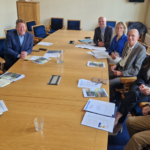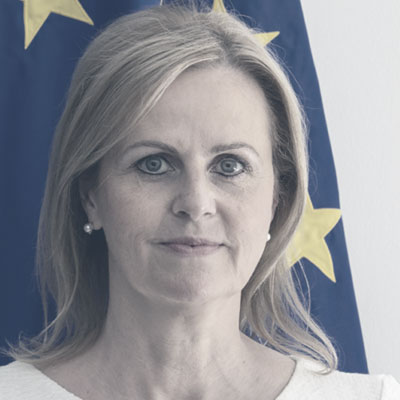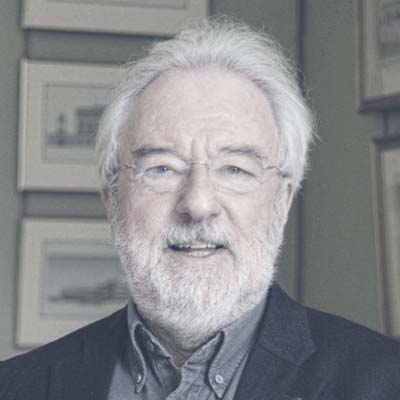
The National Water Forum calls for the development of a national strategy for domestic water conservation
30th August 2023
Balancing the net zero equation in water utilities
30th August 2023Climate Action Plan 2023 (CAP23) commits to Ireland’s communities being “healthy and secure”, enjoying cleaner water. eolas Magazine analyses the document to illustrate just how the Government plans to achieve this.
CAP23 makes note of the Intergovernmental Panel on Climate Change’s (IPCC) prediction that changes in the climate will lead to “further pressure on our water resources and food production systems with associated impacts on river and coastal ecosystems” and “poorer water quality”.
Furthermore, the Climate Status Report for Ireland 2020 found that Ireland’s sea levels have risen by approximately two to three millimetres per year since the early 1990s. It also projects significant reductions in average annual levels of spring and summer rainfall, and substantial increases in the frequency of heavy precipitation events in winter and autumn. Effects of these changes will include increased “likelihood of river and coastal flooding” and “increased pressure on water supply and water quality”.
While CAP23 does not have a dedicated water section, the actions that will be taken that affect the sector are included across multiple associated sections such as agriculture, land-use, and adaptation.
Agriculture
CAP23 states, “altered practices across land uses, under the correct conditions, can yield significant co-benefit for ecosystem services including water quality, drought management, flood attenuation, and biodiversity”.
CAP23 cites Food Vision 2030 – the Department of Agriculture, Food and the Marine’s strategy that aims at Ireland becoming a world leader in sustainable food systems – as playing a part in the improvement of water quality in Ireland, with its aim of achieving a climate-neutral food system by 2050 requiring improvements in areas such as emissions, biodiversity, water quality, forestry, fisheries, organic farming, and food waste.
Key to agriculture, as it relates to water quality, is reduction of nitrates in waters with estuaries, coastal water, and groundwater drinking supplies, with the south and the east of the country said to be particularly at risk. Teagasc states that 85 per cent of nitrates in rural water catchments originate in agriculture and that estuarine waters are in the poorest condition of the affected waters.
CAP23 notes that Ireland’s current level of organic farming – under 3 per cent, just 110,000 hectares of an agricultural landbank of 4.9 million hectares – is low compared to the rest of Europe, which has an average of 9.1 per cent. Accordingly, the plan notes the aim of the EU’s Farm to Fork Strategy to reach at least 25 per cent organic farming by 2030, which would require an increase of almost five times on Ireland’s part to reach 450,000 hectares.
While organic farming does not totally eliminate nitrate run-off, multiple studies have found it to significantly decrease the level of run-off. One such study, published in Food Science and Nutrition in 2013, found nitrate levels in organic production of baby leaf salads to vary between 1.45 and 6.40mg per kg of fresh weight, while conventional production ranged from 10.5 to 45.19mg/kg of fresh weight.
The establishment of the fifth Nitrates Action Programme will seek to address levels of nitrates used in Irish agriculture, with a review of maximum nitrogen limits as set out within the Nitrates Regulations to be performed by Q2 2024.
Land use
The Nitrates Regulations will also dictate some of the land use sector’s effects on Irish waters, with mandatory requirements to enhance carbon sequestration to be imposed. Also key will be the attempts to reduce the management intensity of at least 80,000 hectares of drained, agricultural, managed carbon-rich soils by 2030, which is expected to improve water quality, increase biodiversity, and enhance resilience to changing weather.
Further measures within the land use section of the plan will also work to improve water quality should they come to pass. Although CAP23 does not make mention of this when discussing plans to increase afforestation by incentivising its increase to 8,000 hectares per annum, increased afforestation of previously bare or heavily eroded areas is known to control soil erosion. The control of the erosion extends the lives of nearby reservoirs and improves water quality through the infiltration of precipitation in forest soils before flowing to the reservoir.
Peatland rehabilitation will also play a role in the water system, with stated benefits including improved water quality and flood attenuation. The plan includes within it the goal to rehabilitate 77,600 hectares of peatland by 2030.
Adaptation
With climate change forecast to have significant impacts upon water quality and supply, the adaptation section of CAP23 contains within the most water-specific measures. Sectoral adaptation plans have been formulated and broken down into themes to be led by government departments. The Water Resource and Flood Risk Management Adaptation Plan is broken down into three sector level themes: flood risk management, to be led by the Office of Public Works; and water quality and water services infrastructure, both of which will be led by the Department of Housing, Local Government and Heritage.
Four actions included within the plan under the adaptation section make specific mention of working on water issues. First, options will be developed for the delivery of a national implementation strategy for nature-based solutions and interim guidance for the management of rainwater and surface water runoff in urban areas. Second, climate change groundwater flood maps will be produced and predicted climate change impacts to groundwater flooding at four pilot sites will be assessed. Third will be the improvement of the resilience of Ireland’s infrastructure. Lastly, the Government plans to increase awareness of water conservation and the “importance of protecting Ireland’s water resources” among students through the Green Schools Partnership programme.





 Ossian Smyth TD
Ossian Smyth TD Florika Fink-Hooijer
Florika Fink-Hooijer Antoine Oger
Antoine Oger Laura Curtis-Moss
Laura Curtis-Moss Anthony Costello
Anthony Costello Anja Murray
Anja Murray Niall Ó Donnchú
Niall Ó Donnchú Mike Savage
Mike Savage Brian Carroll
Brian Carroll Claire Downey
Claire Downey Oisín Coghlan
Oisín Coghlan Stephen Onakuse
Stephen Onakuse Kevin O’Sullivan
Kevin O’Sullivan Susan Hegarty
Susan Hegarty Hendrik W van der Kamp
Hendrik W van der Kamp Philip Nugent
Philip Nugent Adrian Smyth
Adrian Smyth  Ainhoa Gonzalez Del Campo
Ainhoa Gonzalez Del Campo  Geoff Dooley
Geoff Dooley  Clare Pillman
Clare Pillman  David Greenfield
David Greenfield Danielle Conaghan
Danielle Conaghan Peter McEvoy
Peter McEvoy Triona McGrath
Triona McGrath J Owen Lewis
J Owen Lewis Gavin Smith
Gavin Smith Imelda Hurley
Imelda Hurley Lucy Gaffney
Lucy Gaffney Dr Venkatesh Kannan
Dr Venkatesh Kannan Kevin Hegarty
Kevin Hegarty Eimear Cotter
Eimear Cotter Aditya Arora
Aditya Arora Patric Child
Patric Child Eleanor Roche
Eleanor Roche Andy Bleasdale
Andy Bleasdale Andrew Muir MLA
Andrew Muir MLA Chris Hewitt
Chris Hewitt Francesca Racioppi
Francesca Racioppi Christopher Hammond
Christopher Hammond Laura Díaz Anadón
Laura Díaz Anadón Lorna McAdoo
Lorna McAdoo Conor Murphy
Conor Murphy  Mark Horton
Mark Horton  Niall McLoughlin
Niall McLoughlin  Zoe Kavanagh
Zoe Kavanagh Niall Ó Donnchú
Niall Ó Donnchú Venkatesh Kannan
Venkatesh Kannan David McGee
David McGee Anna Rose
Anna Rose Paul Hogan
Paul Hogan








